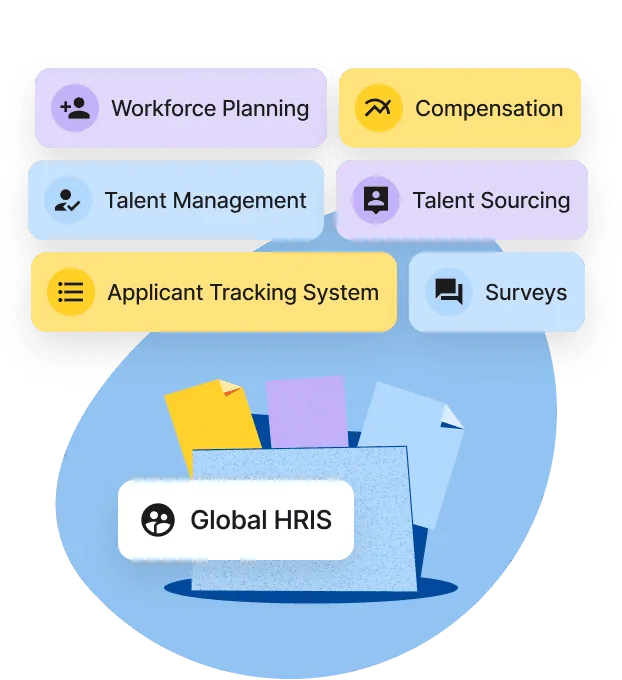How Smart Teams Structure Their Tech Stack for Flexibility and Scale
Author
Lauren Mitchell
Last Update
June 13, 2025
Published
May 20, 2024

Table of Contents
Table of Contents
About the author
Alice Burks is the Director of People Success at Deel. She has a passion for transforming the workplace, and is dedicated to creating a new world of work where individuals have access to the best global opportunities and organizations can connect with top-tier talent.
Technology is supposed to make work easier. But for many growing teams, adding more tools feels like adding more problems—more logins, more confusion, more friction between systems.
At ToolAdvisor, we’ve worked with hundreds of small and mid-sized teams evaluating their tech stack. The pattern is clear: the smartest teams don’t just chase tools with the most features. They structure their stack intentionally for flexibility today—and scale tomorrow.
Here’s how they do it—and what your team can learn from their approach.
Why your tech stack can make or break your team
Your tech stack isn’t just a collection of tools. It’s the foundation for how your team collaborates, delivers work, and adapts to growth.
A well-structured stack:
- Aligns with how your team actually works
- Supports clear processes and accountability
- Integrates smoothly across functions
- Flexes as your needs evolve
A poorly structured stack:
- Creates data silos and manual workarounds
- Introduces overlapping tools and bloated costs
- Slows decision-making with fragmented information
- Requires constant troubleshooting
For small teams especially, the right stack can multiply productivity. The wrong one? It adds hidden friction to everything you do.
The difference between flexible and rigid software setups
Flexible stacks evolve with your business:
- Modular tools that integrate via APIs
- Clear ownership of systems by function
- Ability to swap tools without disrupting workflows
- Balance between specialized tools and core platforms
Rigid stacks lock you in:
- One-size-fits-all platforms that don’t fit your processes
- Over-reliance on a single vendor for everything
- Difficulty scaling features or adjusting user roles
- High switching costs when needs change
Smart teams design for flexibility—knowing that priorities shift, teams grow, and tech evolves fast.
Common mistakes growing teams make with tools
Overloading the stack too soon
Adding tools for every problem creates complexity fast. Smart teams streamline first, add tools carefully.
Falling for features over fit
A tool packed with AI and automation sounds great—but does it align with your workflows?
Skipping integration considerations
Tools that don’t talk to each other lead to manual workarounds, errors, and lost productivity.
Assuming enterprise tools work for small teams
Big-name platforms often introduce unnecessary complexity or costs for small, nimble teams.
Ignoring process alignment
Even the best tool underperforms without clear processes and adoption from the team.
A key takeaway for you: Even without a platform like Deel, any company can create this kind of clarity. Start with a shared RACI or even a basic checklist. What matters most is that ownership is visible, and people know their role in delivering a great experience.
The building blocks of a scalable tech stack

Purpose-built tools: Select tools designed for your specific function or workflow—rather than generic, catch-all platforms.

API-first mindset: Prioritize tools that integrate easily with others, reducing data silos and manual steps.

Clear system ownership: Assign team members to own specific tools, ensuring accountability and best practices.

Progressive adoption: Roll out new tools in phases, with training and feedback loops—minimizing disruption.

Data portability: Choose vendors that allow easy export/import of data to future-proof against switching needs.
A key takeaway for you: None of these actions require a big budget—but they do require intention. A short Loom, a Slack message, or a team coffee can leave a lasting impression.
Should you buy all-in-one platforms or best-of-breed tools?
There’s no universal answer—but smart teams weigh the trade-offs:
All-in-One Platforms
Pros:- Unified user experience
- Streamlined vendor management
- Easier initial setup
Cons:
- May lack depth in specific features
- Can be hard to customize workflows
- Risk of vendor lock-in
Best-of-Breed Tools
Pros:
- Deep functionality for each use case
- Greater flexibility in setup
- Easier to swap tools as needs change
Cons:
- More complex integrations
- Requires clear process alignment
- Potential for tool sprawl if unmanaged
The smartest teams often combine both—core platforms for broad needs, specialized tools for critical workflows.
A key takeaway for you: Even in a scrappy setup, this kind of behind-the-scenes clarity is possible:
Use one doc or tool to track onboarding ownership by function
Share a timeline with key tasks and touchpoints
Flag blockers clearly (e.g., device not provisioned, contract not signed).
How to future-proof your stack without constant changes
You can’t predict every shift—but you can structure for adaptability:
Start with flexible foundations
Prioritize tools with strong integration ecosystems and customization options.
Design processes, then buy tools
Map workflows first. Let process drive tool selection—not the other way around.
Limit vendor dependencies
Avoid over-reliance on a single provider for every function.
Plan for scaling
Select tools that can support more users, data, or complexity as you grow.
Review annually
Conduct a light tech stack audit each year—retire unused tools, optimize integrations, and reassess needs.
Key takeaway for you: Automate the admin so your team can show up live for the moments that matter. No tool can replace human warmth, even over Zoom.
Key takeaways
If you’re just starting out, start small:
Use one doc to define onboarding roles by team
Give managers a simple first-week checklist
Redesign orientation to create conversation, not just compliance.
When you do these things, you’ll find that onboarding isn’t just about getting people up to speed. It’s about setting the tone for how your company works together—and who it’s for. Because onboarding done right isn’t just a process. It’s a first impression of your culture in action.
- Your tech stack is the backbone of your workflows—structure it intentionally.
- Flexibility enables scale—rigid, bloated stacks slow growth.
- Smart teams balance all-in-one platforms with best-of-breed tools.
- Integration, process alignment, and ownership are critical.
- Regular reviews keep your stack optimized as needs evolve.
Explore smarter tech choices with ToolAdvisor
Choosing the right tools is only half the battle—structuring them for flexibility and scale is what drives real productivity.
At ToolAdvisor, we provide expert insights and practical comparisons to help growing teams evaluate software that fits—not just today, but as your business evolves.
Ready to build a smarter stack? Start exploring your best-fit tools today.
Deel HR
All-in-one HR management solution for global teams
Deel HR brings everything together—planning, hiring, performance, compensation, and more—so you can manage your global workforce in one intuitive system. Onboard in minutes, automate tasks, and stay compliant in 150+ countries.

More resources
1. How Long Should Onboarding Take? Best Practices and Ideal Timeline
2. How to Make Onboarding More Engaging: 17 Fun Onboarding Ideas
3. How to Use AI in Employee Onboarding: 7 Key Use Cases to Drive Success
4. 11 Companies with the Best Onboarding Programs: Find Inspiration for Your Strategy
5. How Google Onboards New Hires (And How You Can Easily Replicate It)
About the author
Lauren Mitchell is a software strategist and workflow analyst at ToolAdvisor. She helps teams design scalable tech stacks that align with real-world processes and evolving business needs.









